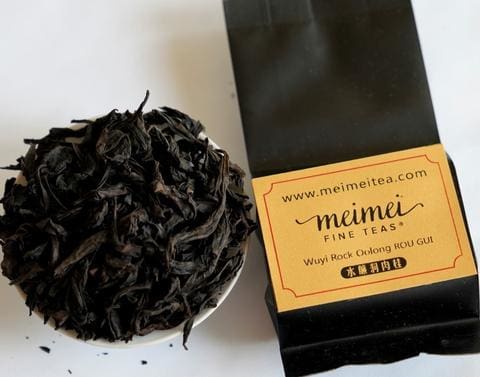
Wuyi Rou Gui: What’s the Difference between Shui Lian Dong and Ma Tou Yan?
You may have noticed that we carry two different Wuyi Rou Gui oolongs on our website, one that is sourced from Shui Lian Dong (the famous “Water Curtain Cave”) and the other that is sourced from Ma Tou Yan (the equally famous “Horse Head Rock”).

For some, this might raise an interesting question: why did we decide to source two of the same tea?
After all, both of these teas are the same varietal, harvested the same year, and roasted by the same tea master, Master Liu Qing. And both of these teas were grown in core-producing regions within the Wuyi Mountain area. What could possibly be the difference?
The answer is simple: terroir.
Although both teas are grown in the Wuyi Mountain area, they have important differences in their character, differences that have been nurtured by their unique environments. In fact, these two teas are the perfect introduction for seasoned tea drinkers hoping to explore the nuance that terroir brings to the palate.
Shui Lian Dong is one of the most popular and scenic areas in all of the Wuyi Mountain area, covering more than 5,000 acres of land. The area boasts an impressively vivid landscape where colorful clays of sunburnt orange and golden-brown line the rocky slopes, dotted with vibrant greens from the lush vegetation.
Near the top of the central cliff lies a small cave out of which flows a stream of water that spills over the edge, creating an astonishing 100m waterfall that twists and writhes in the wind like a curtain. This landmark is what gives the area its name, Water Curtain Cave.

When grown in this area, the end result is a quintessential Wuyi Rou Gui, bursting with the characteristic aromatics of cassia and stone fruits. It is a true representative of everything that a good Wuyi Rou Gui should be.
And yet, though less well-known than Shui Lian Dong, the area known as Horse Head Rock might even be more impressive.
There are so many variables that can affect the flavor of tea — mineral composition of the soil, rainfall, sunlight exposure, nearby vegetation, altitude, temperature — and it just so happens that the area around Horse Head Rock seems almost perfectly calibrated for tea bushes to flourish.

Here, the protruding cliffs help to shield the tea bushes from excessive sunlight, bushes that are nourished by the mineral-rich soil formed from ancient volcanic ash and growing amongst these bushes are pine trees that fill the air with the scents of juniper and evergreen.
It is precisely this pristine environment that the tea absorbs and reflects back in each sip, resulting in an intense aroma, refreshing hui gan (回甘) that features a woodsy, throat-tingling, fruity sensation, a sensation wholly unique to Rou Gui from Horse Head Rock.
By sampling these two teas back-to-back, it will quickly become clear how much difference terroir makes, even when teas share a general production area. This isn’t to suggest that one is superior to the other; they’re just different in interesting ways, ways worth exploring further.
